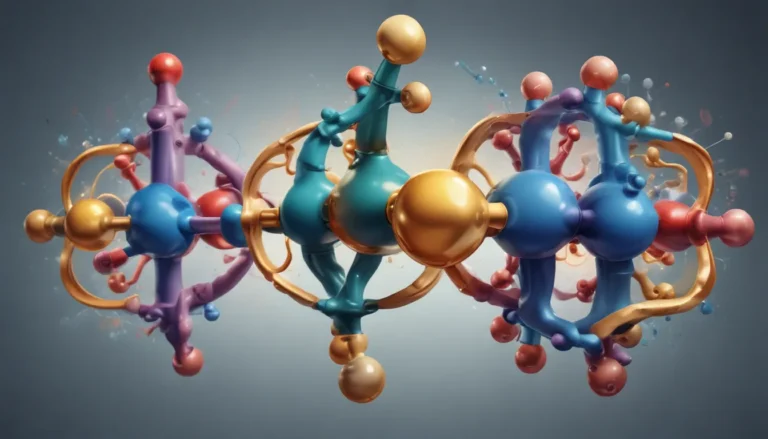A Note About Images: The images used in our articles are for illustration purposes only and may not exactly match the content. They are meant to engage readers, but the text should be relied upon for accurate information.
Welcome to the captivating world of quantum mechanics, where particles behave both as waves and particles, unveiling a realm of enigmatic phenomena at the subatomic level. At the heart of this intricate world lies the Schrödinger equation, a fundamental concept that revolutionized our understanding of quantum systems. Developed by the visionary Austrian physicist Erwin Schrödinger in the 1920s, this equation serves as a beacon of light in the otherwise mysterious quantum realm, guiding scientists through the complexities of particle behavior.
Unraveling the Schrödinger Equation
Let’s embark on a journey through 14 intriguing facts about the Schrödinger equation, shedding light on its significance and unraveling the enigmatic nature of quantum mechanics.
The Fundamental Equation in Quantum Mechanics
The Schrödinger Equation stands as a pillar in quantum mechanics, defining the behavior of particles as both waves and particles. By delving into the wave functions of quantum systems, this equation allows scientists to grasp the intricacies of the quantum world, shaping our understanding of the microscopic realm.
A Glimpse into History: Development in 1926
In 1926, Erwin Schrödinger unveiled the Schrödinger Equation as a groundbreaking alternative for describing quantum systems. This pivotal moment marked a turning point in the field of quantum mechanics, offering a mathematical framework to explore the behavior of particles at the atomic and subatomic levels.
The Puzzle of a Partial Differential Equation
The complexity of the Schrödinger Equation lies in its form as a partial differential equation, linking the time derivative of a particle’s wave function to its spatial derivatives. This equation captures the probabilistic essence of quantum mechanics, mapping out the evolution of wave functions over time.
Embracing Wave-Particle Duality
The Schrödinger Equation reconciles the dual nature of particles, portraying them as both waves and particles. This unique feature allows for a versatile description of particles, exhibiting characteristics of both entities depending on the experimental conditions.
Predicting the Unpredictable: Probability Distribution
Solving the Schrödinger Equation unveils the probability distribution of finding particles at specific locations within a quantum system. This predictive power is essential for understanding the behavior of particles at the subatomic level and anticipating experimental outcomes.
A Time-Dependent Evolution
Dynamic in nature, the Schrödinger Equation accounts for the evolution of quantum systems over time. By tracing the changes in a particle’s wave function through time, scientists can analyze and forecast its behavior at various points along its journey.
Energy States Unveiled
One of the vital applications of the Schrödinger Equation lies in uncovering the energy levels within quantum systems. Through its solutions, scientists can unveil the allowed energy states of particles, offering insights into their stability and dynamics.
The Power of Linearity
The linearity of the Schrödinger Equation introduces the superposition principle in quantum mechanics, enabling the addition of wave functions to create new ones. This principle empowers the description of complex systems with multiple particles, opening doors to a deeper understanding of quantum phenomena.
The Quest for Solutions
While straightforward for simple systems, the Schrödinger Equation poses challenges for complex quantum systems, often eluding exact analytical solutions. Researchers resort to numerical methods and approximations to navigate the intricate behaviors of quantum systems.
Electron Insights in Atoms
Central to understanding atomic structure, the Schrödinger Equation sheds light on electron behavior within atoms. By solving this equation, scientists unravel the allowed energy levels and orbitals of electrons, forming the foundation for chemical bonding and the periodic table.
Pioneering the Quantum Mechanics Development
The introduction of the Schrödinger Equation marks a pivotal moment in the evolution of quantum mechanics as a field. Offering a unified framework for understanding quantum systems, this equation laid the groundwork for future advancements and discoveries in the quantum realm.
Beyond Atoms: A Wide-Ranging Application
The reach of the Schrödinger Equation extends beyond individual particles to encompass molecules, crystals, and even macroscopic systems under specific conditions. This versatility empowers scientists to explore and study the quantum nature inherent in the world around us.
Limitations in Relativity
A non-relativistic equation, the Schrödinger Equation disregards relativistic effects such as time dilation and length contraction. For particles approaching the speed of light, relativistic quantum mechanics like the Dirac Equation steps in to accurately portray their behaviors.
Everlasting Relevance
Continuing to hold a paramount position in physics, the Schrödinger Equation stands as one of the most critical equations in modern science. Its applications span across diverse fields, from quantum chemistry to solid-state physics, persisting as a key tool for unraveling the mysteries of the quantum world.
Unveiling the Enigma
Enigmatic yet enlightening, the Schrödinger equation remains a beacon of exploration in the realm of quantum mechanics. Its intricate web of mathematical elegance guides us through the wave-like nature of particles, offering a glimpse into the probabilistic dance of the quantum world. As we navigate further into this mysterious domain, the Schrödinger equation will undoubtedly continue to illuminate our path towards a deeper understanding of the quantum universe.
FAQs: Unraveling Perplexities
-
What is the Schrödinger equation?
The Schrödinger equation is a fundamental equation in quantum mechanics that describes the behavior of quantum systems, unveiling their wave-like properties and probabilistic behaviors. -
Who developed the Schrödinger equation?
Austrian physicist Erwin Schrödinger unveiled the Schrödinger equation in 1925, revolutionizing the field of quantum mechanics and earning the Nobel Prize in Physics in 1933. -
What insights does the Schrödinger equation provide about particles?
The Schrödinger equation offers a window into the wave-like nature of particles, allowing us to calculate probabilities of their states and locations within quantum systems. -
How is the Schrödinger equation applied in technology?
With practical applications in technology, the Schrödinger equation plays a crucial role in fields like quantum computing, enabling the understanding and manipulation of quantum states for advanced computational systems. -
Can the Schrödinger equation be solved for all quantum systems?
While simple systems find analytical solutions, the Schrödinger equation poses challenges for complex systems. The use of numerical methods and computational approaches aids in navigating the intricate behaviors of such systems.
Exploring the Quantum Landscape
At the heart of quantum mechanics lies the Schrödinger equation, a profound and enigmatic equation that guides us through the intricate behaviors of particles at the subatomic level. As we unravel its complexities, we pave the way for new discoveries, pushing the boundaries of our understanding of the quantum world. Trust in the power of this fundamental equation as we delve deeper into the mysteries of the microscopic realm, embraced by the elegance and enigma of the Schrödinger equation.





